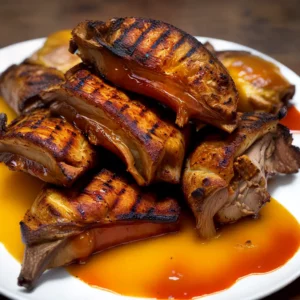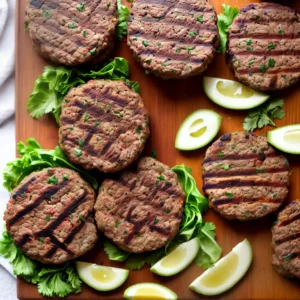Hey there, fellow food enthusiasts! Today, I’m going to share with you a super simple way to make your own heavy cream from milk. Whether you’re out of heavy cream or looking for a healthier homemade alternative, this easy step-by-step guide has got you covered.
Why bother making heavy cream from milk, you ask? Well, not only is it a budget-friendly option, but it’s also perfect for those who are lactose intolerant or following a dairy-free diet. Plus, you can use it as a substitute for heavy cream in a variety of recipes, from creamy sauces to decadent desserts.
So, let’s dive right in and learn how to whip up some homemade heavy cream in no time!
Key Takeaways:
- Learn how to make heavy cream from milk with this easy step-by-step guide.
- Homemade heavy cream is a versatile and budget-friendly alternative to store-bought.
- It can be used as a substitute for heavy cream in various recipes.
- Perfect for those with lactose intolerance or following a dairy-free diet.
- Stay tuned for more delicious tips and tricks in the world of cooking!
Understanding Heavy Cream
Heavy cream is a popular dairy product known for its rich and creamy texture. It is derived from cow’s milk and has a high fat content, typically ranging from 36-40%. The high fat content gives heavy cream its thick consistency, making it perfect for cooking and baking.
One of the main uses of heavy cream in cooking and baking is to add richness and creaminess to dishes. It can be used as a base for sauces, soups, and custards, giving them a velvety texture and enhancing their flavors. Heavy cream is also a key ingredient in making desserts like ice cream, pudding, and whipped cream.
It’s important to note the difference between heavy whipping cream and whipping cream. Heavy whipping cream has a slightly higher fat content than whipping cream, which affects its ability to hold peaks when whipped. Heavy whipping cream is often preferred for making whipped cream, as it holds its shape better and creates a more stable foam.
Heavy cream is a versatile ingredient that can elevate both sweet and savory dishes. Its rich and creamy texture adds depth and flavor to a wide range of recipes, making it a staple in many kitchens.
| Heavy Cream | Heavy Whipping Cream | Whipping Cream |
|---|---|---|
| 36-40% fat content | 36-40% fat content | 30-36% fat content |
| Thick and creamy texture | Thick and creamy texture | Lighter texture |
| Ideal for sauces, soups, and desserts | Ideal for whipped cream and desserts | Ideal for whipped cream and desserts |
When using heavy cream in your recipes, it’s important to keep in mind its high fat content. While it adds richness and flavor to dishes, it can also contribute to the overall calorie and fat content. Moderation is key when enjoying dishes made with heavy cream, especially for those watching their fat intake.
Homemade Heavy Cream Recipes
When it comes to making homemade heavy cream, there are several methods you can try using everyday ingredients. Whether you’re looking for a dairy-free option or simply want to make use of ingredients already in your kitchen, these recipes are versatile and budget-friendly.
Whole Milk and Butter Method: One popular method is to combine whole milk and melted unsalted butter. Simply mix 3/4 cup of whole milk with 1/3 cup of melted unsalted butter until well blended. This mixture can be used as a substitute for heavy cream in various recipes.
Milk and Cornstarch Method: Another option is to use milk and cornstarch as a thickening agent. Mix 1 cup of milk with 2 tablespoons of cornstarch to create a smooth paste. Add the paste to heated milk and stir until thickened.
Evaporated Milk and Flour Method: If you have evaporated milk on hand, you can use it to make heavy cream by combining 1 cup of evaporated milk with 1/2 cup of flour. Mix a small amount of milk with the flour to create a smooth paste, then add it to heated milk and stir until thickened.
Microwave Method: If you’re short on time, the microwave method is a quick and convenient option. Combine 3/4 cup of whole milk and 1/3 cup of melted unsalted butter in a microwave-safe container. Heat the mixture in the microwave for about 45-60 seconds, or until the desired consistency is reached.
For those following a vegan diet, there are alternative options available as well. You can use a mixture of soy milk and oil, or try using coconut cream as a substitute for heavy cream in your recipes.
With these homemade heavy cream recipes, you can easily create a creamy and rich substitute for heavy cream that suits your dietary needs and preferences.
Heavy Cream Substitutes
When you find yourself without heavy cream or looking for a lighter alternative, there are several substitutes that can be used in various recipes. These alternatives will provide similar results and textures, with slight variations in taste. Here are some common substitutes for heavy cream:
1. Half-and-Half
Half-and-half is a mixture of equal parts whole milk and light cream. It contains about 10-12% fat, which is lower than the fat content of heavy cream. However, it can still be used in many recipes as a substitute. Keep in mind that the lower fat content may result in a slightly lighter texture and less richness, but it can still provide a creamy element to your dishes.
2. Greek Yogurt
Greek yogurt is another option to consider when looking for a heavy cream substitute. It has a thick and creamy texture, similar to heavy cream, but with a tangy flavor. Greek yogurt can be used in both sweet and savory recipes, such as dressings, sauces, and desserts. When using Greek yogurt as a substitute, you may need to adjust the consistency by adding a little bit of milk or water to achieve the desired texture.
3. Sour Cream
Sour cream is a versatile ingredient that can be used as a substitute for heavy cream in certain recipes. It has a rich and tangy flavor, which can add a unique taste to your dishes. Sour cream can be used in creamy soups, baked goods, and sauces. Keep in mind that sour cream has a higher fat content compared to heavy cream, so it may result in a slightly thicker consistency.
4. Cottage Cheese
Cottage cheese can be used as a substitute for heavy cream in certain recipes, particularly in savory dishes. It has a creamy texture and can provide richness to sauces, casseroles, and dips. To use cottage cheese as a substitute, blend it until smooth using a blender or food processor. You may need to add a little bit of milk or water to achieve the desired consistency.
These alternatives can be a valuable resource when heavy cream is not available or when you prefer a lighter option. Experiment with these substitutes to find the one that works best for your recipe and taste preferences.
Using Heavy Cream in Various Dishes
Heavy cream is a versatile ingredient that can be used in a variety of dishes, adding richness and flavor. Whether you’re looking to enhance your morning coffee, make homemade ice cream, create a decadent whipped cream topping, or add creaminess to savory recipes, heavy cream is a go-to choice.
One popular way to use heavy cream is as a coffee creamer. It adds a luxurious texture and creamy taste to your favorite brew. Simply pour a splash of heavy cream into your hot coffee and stir to combine. The result is a smooth and indulgent cup of coffee that will kickstart your day.
Another delicious use for heavy cream is in making homemade ice cream. By combining heavy cream with sugar, vanilla extract, and your desired mix-ins, you can create a creamy and flavorful frozen treat. Whether you prefer classic flavors like chocolate or vanilla, or more adventurous options like salted caramel or strawberry cheesecake, heavy cream is essential for achieving that perfect creamy consistency.
Whipped cream made from heavy cream is a classic topping for desserts, adding a light and airy texture. Simply whip cold heavy cream with a touch of sugar until soft peaks form, then dollop it onto your favorite cakes, pies, or fresh berries. The result is a heavenly and delectable treat that will impress your guests.
The versatility of heavy cream extends beyond sweet dishes. It also plays a crucial role in savory recipes, adding richness and depth of flavor. Heavy cream can be used in sauces, soups, and casseroles to create a creamy and luscious texture. Whether you’re making a creamy Alfredo sauce for pasta, a savory mushroom soup, or a comforting baked mac and cheese, heavy cream will elevate your dish to a whole new level.
As you can see, heavy cream is a must-have ingredient in the kitchen. Its ability to enhance both sweet and savory dishes makes it a versatile and indispensable addition to any cook’s pantry.
Storing and Handling Heavy Cream
Properly storing and handling heavy cream is essential to maintain its freshness and quality. Here are some tips to help you store and handle heavy cream:
Refrigeration
Heavy cream should always be kept refrigerated to prevent spoilage. Make sure to store it in the coldest part of your refrigerator, preferably at a temperature between 35°F and 40°F (1.7°C and 4.4°C).
Freezing
While it is possible to freeze heavy cream, it may affect its texture and consistency when thawed. If you need to freeze heavy cream, pour it into an airtight container, leaving some room for expansion. When you’re ready to use it, thaw it in the refrigerator overnight and give it a good shake before using.
Preventing Curdling
When incorporating heavy cream into hot liquids, it’s important to do so slowly to prevent curdling. Start by whisking a small amount of the hot liquid into the cream to temper it. Then, gradually add the tempered cream to the remaining hot liquid while stirring constantly. Avoid overheating the cream, as high temperatures can cause it to curdle.
| Storage Method | Temperature | Duration |
|---|---|---|
| Refrigeration | 35°F to 40°F (1.7°C to 4.4°C) | Up to 1 week |
| Freezing | 0°F (-18°C) | Up to 3 months |
By following these guidelines, you can ensure that your heavy cream remains fresh and ready to use whenever you need it. Whether you’re using it to whip up a delicious dessert or adding some richness to a savory dish, properly handling and storing heavy cream is key to achieving the best results.
Additional Heavy Cream Information
In addition to the basic information about making heavy cream and its substitutes, there are a few more aspects to consider. If you need to make cream thicker, there are different methods you can use. One option is to add a thickening agent like gelatin or cornstarch to the cream and heat it until it thickens. Another method is to whip the cream for a longer period of time until it reaches the desired consistency.
When reading and writing about heavy cream, it’s important to understand the different terms and measurements used. For example, heavy cream is often referred to as whipping cream or double cream in some countries. It’s also important to note the fat content, as different recipes may call for different levels of fat.
“Making homemade heavy cream substitutes can be a convenient and cost-effective option. However, if you prefer a commercially available alternative, there are powdered heavy cream products available on the market. These powders can be reconstituted with water to create a thick and creamy consistency similar to heavy cream. They are a convenient option for those who may not have access to fresh heavy cream or prefer a longer shelf life.”
Making Cream Thicker
If you find that your cream is not as thick as you’d like, there are a few tricks you can try. One option is to refrigerate the cream for a longer period of time before using it, as the colder temperature can help it thicken. You can also try adding a small amount of powdered sugar or vanilla extract, as these can help to stabilize the cream and give it a thicker consistency. Alternatively, you can whip the cream in a chilled bowl using an electric mixer, gradually increasing the speed until it thickens.
Commercial Alternatives
If you’re looking for a convenient alternative to making heavy cream from scratch, there are commercially available options to consider. Heavy cream powder is a popular choice, as it can be reconstituted with water to create a thick and creamy consistency. It has a longer shelf life than fresh cream and can be a convenient pantry staple. Additionally, there are other cream alternatives available, such as canned coconut cream or almond cream, which can be used in place of heavy cream in many recipes.
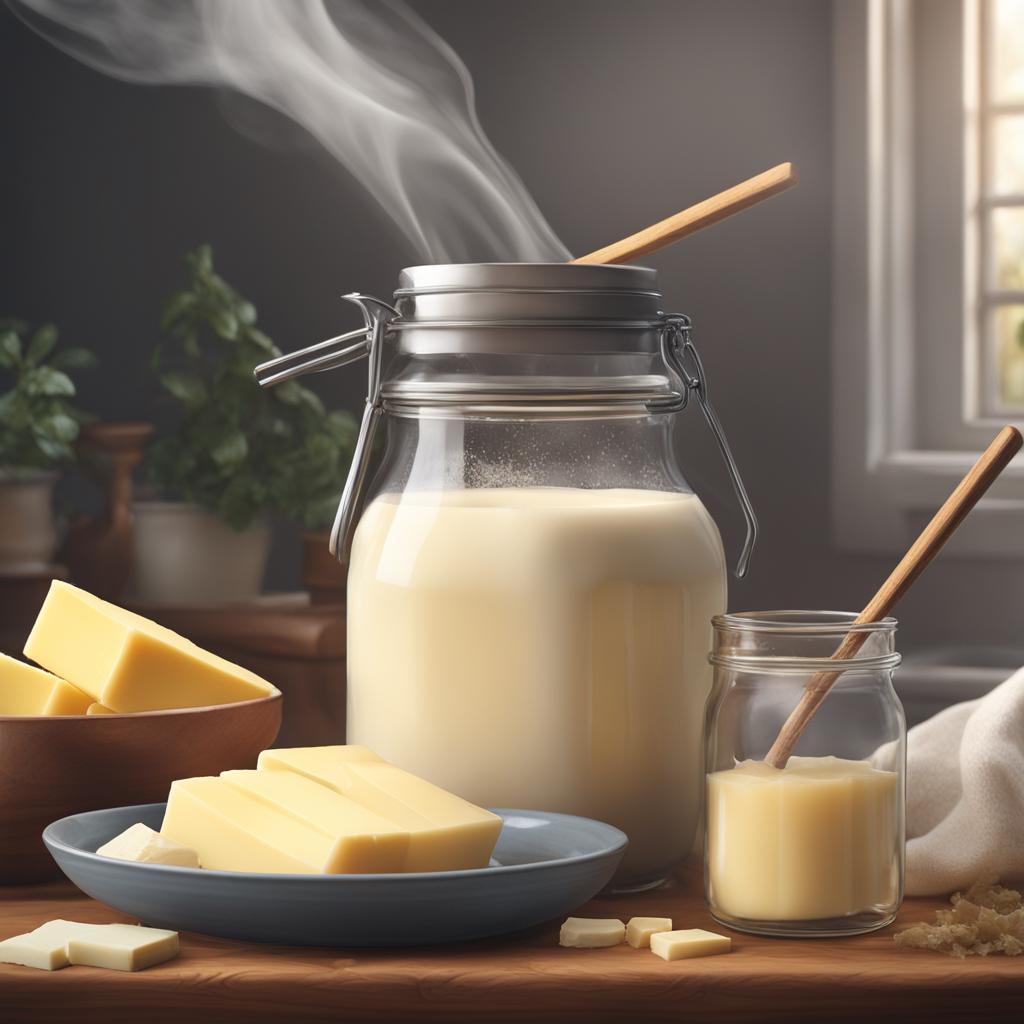
This method is particularly useful when you need heavy cream but don’t have any on hand. It’s a great option for those who are lactose intolerant or prefer a dairy-free alternative. Keep in mind that the flavor and texture may not be exactly the same as store-bought heavy cream, but it can still yield delicious results in many recipes.
Milk and Cornstarch Method
If you’re looking for an alternative method to make heavy cream from milk, the milk and cornstarch method is a great option. This method involves using cornstarch as a thickening agent to achieve the desired consistency. Here’s how you can make homemade heavy cream using milk and cornstarch:
- In a small bowl, mix 2 tablespoons of cornstarch with a small amount of milk to create a smooth paste.
- In a saucepan, heat 1 cup of milk over medium heat until it starts to simmer.
- Slowly pour the cornstarch mixture into the heated milk, stirring constantly.
- Continue to simmer the mixture, stirring frequently, until it thickens to a creamy consistency.
The milk and cornstarch method is a simple and effective way to create a heavy cream substitute. It’s important to note that the ratio of milk to cornstarch may vary depending on the desired thickness. You can adjust the amount of cornstarch based on your preference.
“The milk and cornstarch method is a simple and effective way to create a heavy cream substitute.”
This homemade heavy cream can be used in various recipes that call for heavy cream, such as sauces, soups, and desserts. It provides a rich and creamy texture, making it a versatile ingredient in the kitchen. Whether you’re lactose intolerant, following a dairy-free diet, or simply want to make use of ingredients you already have, the milk and cornstarch method is a great option to consider.
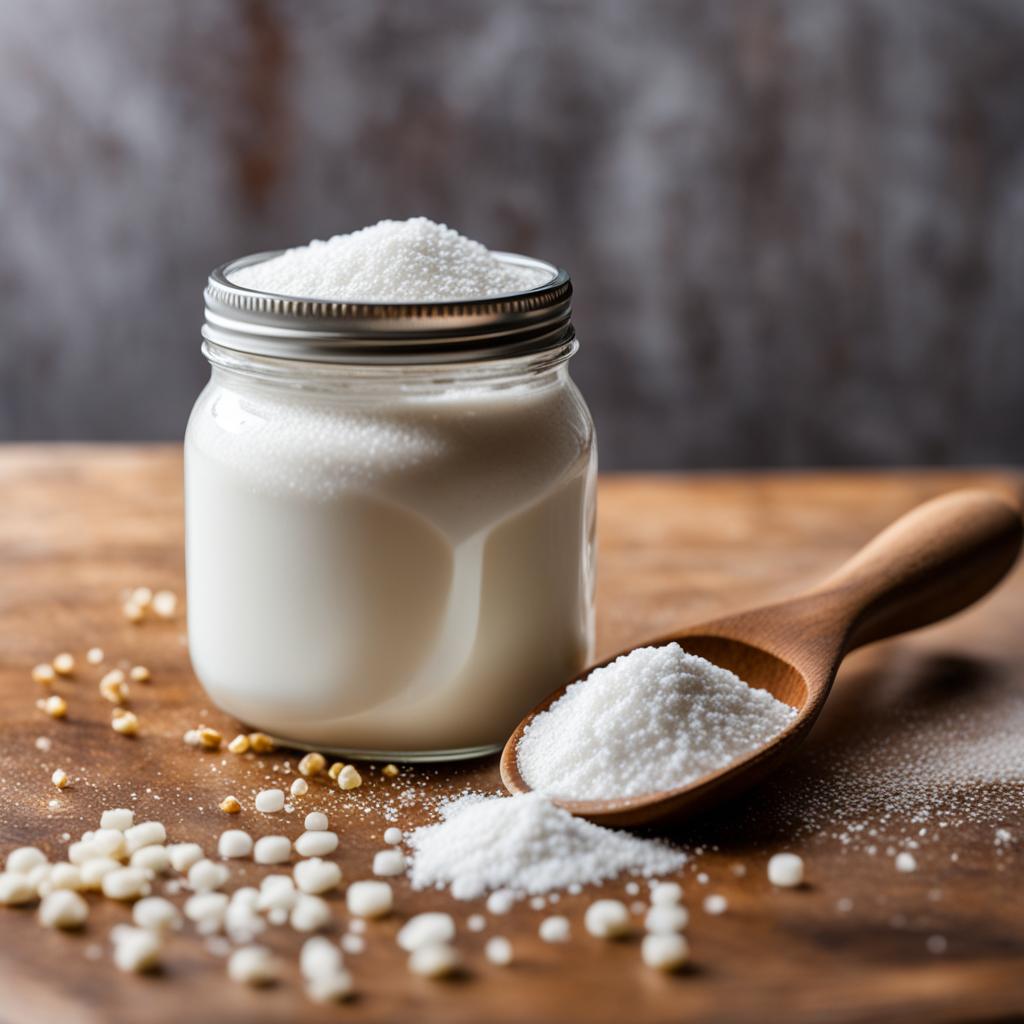
| Ingredients | Instructions |
|---|---|
| 2 tablespoons of cornstarch | 1. In a small bowl, mix the cornstarch with a small amount of milk to create a smooth paste. |
| 1 cup of milk | 2. In a saucepan, heat the milk over medium heat until it starts to simmer. |
| 3. Slowly pour the cornstarch mixture into the heated milk, stirring constantly. | |
| 4. Continue to simmer the mixture, stirring frequently, until it thickens to a creamy consistency. |
Evaporated Milk And Flour Method
Making heavy cream using evaporated milk and flour is a simple and effective method. This technique requires 1 cup of evaporated milk and 1/2 cup of flour as a thickening agent. To create the heavy cream substitute, start by mixing a small amount of the evaporated milk with the flour to create a smooth paste.
Next, heat the remaining evaporated milk in a saucepan over medium heat until it starts to simmer. Once the milk is simmering, slowly add the flour paste to the saucepan while whisking continuously. Continue whisking until the mixture thickens and reaches the desired consistency.
This method allows you to create a homemade heavy cream substitute that can be used in a variety of recipes. It is important to note that the flavor and texture may differ slightly from traditional heavy cream, but it can still provide a creamy and rich element to your dishes.
| Ingredients | Instructions |
|---|---|
| 1 cup evaporated milk | 1. Mix a small amount of evaporated milk with flour to create a smooth paste |
| 1/2 cup flour | 2. Heat the remaining evaporated milk in a saucepan until simmering |
| 3. Slowly add the flour paste to the simmering milk while whisking continuously | |
| 4. Continue whisking until the mixture thickens and reaches the desired consistency |
Microwave Method
If you’re short on time and need to make heavy cream from milk quickly, the microwave method is a convenient option. This method allows you to create a homemade heavy cream substitute in just a matter of minutes.
To use the microwave method, you’ll need 3/4 cup of whole milk and 1/3 cup of melted unsalted butter. Simply combine the milk and melted butter in a microwave-safe container and heat it in the microwave for about 45-60 seconds. Be sure to stop and stir the mixture every 15 seconds to ensure it heats evenly.
Once the mixture reaches your desired consistency, you can use it as a substitute for heavy cream in any recipe. The microwave method is perfect for those times when you need heavy cream in a pinch and don’t have time for more traditional methods.
Pros and Cons of the Microwave Method
| Pros | Cons |
|---|---|
| Quick and convenient method | May not produce the exact same texture as traditional heavy cream |
| Requires minimal ingredients and equipment | Can be challenging to achieve the desired consistency |
| Ideal for emergencies or last-minute cooking | May not work as well in certain recipes or applications |
While the microwave method is a handy technique for making heavy cream from milk, it’s important to note that it may not produce the exact same texture and consistency as traditional heavy cream. Additionally, achieving the desired thickness can be a bit challenging using this method.
However, the microwave method is ideal for those times when you need heavy cream in a pinch and don’t have access to traditional methods. It requires minimal ingredients and equipment, making it a convenient option for emergencies or last-minute cooking.
Vegan Heavy Cream Options
For those following a vegan diet, there are alternative options available for making heavy cream. Many plant-based ingredients can be used to achieve a similar creamy texture and taste. Two popular vegan alternatives for heavy cream are soy milk and oil mixture and coconut cream.
Soy milk and oil mixture is a simple and versatile option. To make this vegan heavy cream substitute, combine 1 cup of soy milk with 1 tablespoon of vegetable oil or a plant-based oil of your choice. Mix well until the oil is fully incorporated into the soy milk. This mixture can be used as a 1:1 replacement for heavy cream in most recipes.
Another option is to use coconut cream. Coconut cream is the thick and creamy part of coconut milk that separates when the can is refrigerated. It has a rich and indulgent texture that works well in both sweet and savory dishes. Simply scoop out the thick coconut cream from a can of refrigerated coconut milk and use it as a substitute for heavy cream.
Benefits of Vegan Heavy Cream Options
- Vegan heavy cream alternatives are suitable for those following a plant-based or dairy-free diet.
- They provide a similar creamy texture and taste to traditional heavy cream.
- Using plant-based alternatives can add a unique flavor profile to your recipes.
- Vegan heavy cream options are often lower in saturated fat and cholesterol compared to dairy heavy cream.
Considerations for Using Vegan Heavy Cream Options
While vegan heavy cream alternatives work well in many recipes, it’s important to note that they may not behave exactly like traditional heavy cream in all applications. It’s always a good idea to test and adjust the proportions when substituting in a new ingredient to ensure the desired consistency and results.
Overall, vegan heavy cream options provide a delicious and cruelty-free alternative for those looking to avoid dairy products. Whether you choose to use a soy milk and oil mixture or coconut cream, these options can be easily incorporated into your favorite recipes, allowing you to enjoy the creamy goodness of heavy cream while staying true to your dietary preferences.
Conclusion
So there you have it – a simple guide on how to make heavy cream from milk. With just a few basic ingredients and some easy-to-follow methods, you can create your own homemade heavy cream substitute. Whether you’re lactose intolerant, looking for a dairy-free option, or just want to use what’s already in your kitchen, making heavy cream from milk is a versatile and budget-friendly solution.
By understanding the different methods outlined in this article, you can experiment and find the one that works best for you. From the whole milk and butter method to the milk and cornstarch method, there are plenty of options to choose from. And for those following a vegan diet, alternatives like soy milk and oil or coconut cream can provide the creamy texture you’re looking for.
So why not give it a try? Whether you need heavy cream for a recipe or simply enjoy having it on hand, making it yourself is a great way to control the ingredients and customize it to your own taste. So grab a carton of milk, some butter or cornstarch, and get ready to whip up your own homemade heavy cream!
FAQ
How do I make heavy cream from milk?
There are several methods for making homemade heavy cream using everyday ingredients, such as whole milk and butter, milk and cornstarch, evaporated milk and flour, or a quick microwave method. There are also vegan options available, like using soy milk and oil or coconut cream.
Can I substitute heavy cream in recipes?
Yes, there are several substitutes you can use for heavy cream, such as half-and-half, Greek yogurt, sour cream, and cottage cheese, depending on the recipe and desired consistency.
What can I use heavy cream for?
Heavy cream can be used in a variety of dishes, both sweet and savory, including as a coffee creamer, for making homemade ice cream, whipped cream, and in savory dishes like soups, sauces, and casseroles.
How should I store and handle heavy cream?
Heavy cream should be kept refrigerated at all times and any unused portion should be stored in an airtight container. Freezing heavy cream is possible, but it may affect the texture when thawed. To prevent curdling, slowly incorporate heavy cream into hot liquids and avoid overheating.
Are there alternatives to heavy cream?
Yes, there are alternative options available, such as heavy cream powder, which can be used in various applications.
How do I make cream thicker?
There are different methods you can use to make cream thicker, such as using a thicker base, adding a thickening agent like cornstarch or flour, or reducing the liquid content through simmering or boiling.
How do I read and write about heavy cream in recipes?
When reading or writing about heavy cream in recipes, it is important to specify whether heavy whipping cream or whipping cream is needed, as the fat content can vary slightly.
Source Links
- https://thekitchencommunity.org/how-to-make-heavy-cream/
- https://www.wikihow.com/Make-Cream-from-Milk
- https://www.cdkitchen.com/recipes/recs/4/Heavy_Cream_Substitute61129.shtml
Related Recipes:
 How to Make Ice Cream in a Blender (Easy Step-by-Step Guide)
How to Make Ice Cream in a Blender (Easy Step-by-Step Guide)
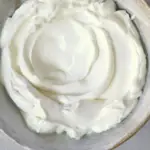 How to Make Greek Yogurt (No Special Equipment)
How to Make Greek Yogurt (No Special Equipment)
 How to Make Nice Cream? (Perfect Every Time!)
How to Make Nice Cream? (Perfect Every Time!)
 How Many Calories in a Gram of Fat? (Perfect Measurement Conversion Guide)
How Many Calories in a Gram of Fat? (Perfect Measurement Conversion Guide)
 How to Make Homemade Croutons? (Perfect Every Time!)
How to Make Homemade Croutons? (Perfect Every Time!)
 How Many Cups Are in a Liter: Unlocking the Mystery
How Many Cups Are in a Liter: Unlocking the Mystery
 How to Freeze Bananas? (Perfect Step-By-Step Guide)
How to Freeze Bananas? (Perfect Step-By-Step Guide)
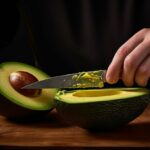 How to Eat Avocado? (Step-By-Step Guide)
How to Eat Avocado? (Step-By-Step Guide)



